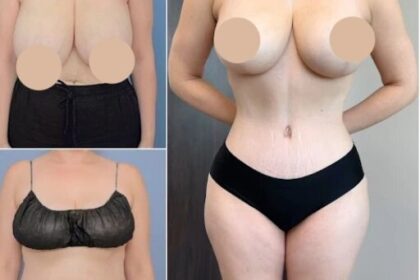If you’re planning IVF for the first time, it’s normal to feel nervous about the number of injections involved. Many people worry that the medication phase will be painful, complicated, or overwhelming. Before beginning treatment, patients almost always ask their fertility nurse “How many injections for IVF treatment will I need?”
The truth is: the exact number varies depending on your body’s response, your doctor’s protocol, and whether progesterone support is given by injection. This guide will help you understand why injections are necessary, how many to expect, and how to handle them confidently.
Why IVF Injections Are Needed
IVF requires more control than a natural menstrual cycle. Normally, your body produces one egg. During IVF, doctors aim to mature multiple eggs to increase the chance of viable embryos.
Injectable medications:
-
Stimulate multiple follicles
-
Prevent eggs from releasing early
-
Prepare eggs for retrieval
-
Support the uterine lining for implantation
Oral medications alone cannot achieve this level of precision.
So, How Many Injections for IVF Treatment Will You Typically Have?
While every patient is unique, most IVF cycles involve:
-
1 to 3 injections per day
-
For 8 to 12 days
This totals approximately 27 to 61 injections per IVF cycle.
Some patients may need more; others may need fewer. It depends on how the ovaries respond.
Breaking Down the Injection Timeline
To understand the total number more clearly, let’s go stage by stage.
✅ 1. Ovarian Stimulation Phase
This is where most injections occur. Medication encourages the ovaries to grow several follicles.
Common drugs include:
-
Menopur
-
Follistim
-
Gonal-F
Duration: 8–12 days
Frequency: 1–2 per day
Estimated injections: 8–24
During this period, the clinic monitors you closely with bloodwork and ultrasounds.
✅ 2. Ovulation Suppression Medications
As follicles mature, your body may attempt to release them. These injections prevent early ovulation.
Common medications:
-
Cetrotide
-
Ganirelix
Duration: 4–6 days
Frequency: 1 injection daily
Estimated injections: 4–6
These usually begin mid-stimulation.
✅ 3. Trigger Injection
This single shot prepares eggs for retrieval by promoting final maturation.
Trigger options include:
-
Ovidrel
-
hCG
-
Lupron
Timing: ~36 hours before retrieval
Estimated injections: 1
Timing must be exact — clinics often assign a precise minute.
✅ 4. Progesterone Support
After embryo transfer, progesterone helps maintain the uterine lining. This phase is crucial for early pregnancy.
Progesterone can be:
-
Vaginally administered
or -
Given as intramuscular injections
If injections are used:
Duration: 2–4 weeks
Frequency: 1 injection per day
Estimated injections: 14–30
These can be more uncomfortable because they go into large muscle tissue.
Putting It All Together
Here’s a quick summary of how many injections for IVF treatment you may receive:
| IVF Stage | Estimated Injections |
|---|---|
| Ovarian stimulation | 8–24 |
| Ovulation suppression | 4–6 |
| Trigger shot | 1 |
| Progesterone support | 14–30 |
Total: 27–61 injections
These numbers are averages — response differs per patient.
Why the Number of IVF Injections Varies
Several factors influence your exact dosage:
Hormonal Response
Some respond quickly and need fewer medications.
Age
Older ovaries may require longer stimulation.
Ovarian Reserve
Low AMH levels often need more medication days.
Diagnosis
PCOS patients may require smaller doses but careful monitoring.
Clinic Protocol
Doctors personalize medication depending on your body.
Different IVF Protocols = Different Injection Amounts
Your fertility specialist chooses the protocol best suited to your reproductive profile.
Antagonist Protocol
-
Most common
-
Moderate injection count
-
Shorter cycle duration
Long Lupron Protocol
-
More suppression injections
-
Higher total number
Mini-IVF
-
Fewer injections
-
Fewer eggs
Natural Cycle IVF
-
Minimal injections
-
Only suitable for select patients
Do IVF Injections Hurt?
Pain tolerance varies, but many patients compare injections to:
-
A quick pinch
-
A slight sting
-
Light pressure
Most IVF medications are subcutaneous (just under the skin), using thin needles similar to insulin needles.
Progesterone injections are intramuscular, and may cause:
-
Muscle soreness
-
Tenderness
-
Bruising
Warm compresses help reduce discomfort.
Common Side Effects
Most injection-related side effects are mild:
-
Bloating
-
Mood swings
-
Headaches
-
Weight fluctuations
-
Bruising at injection sites
-
Fatigue
Your clinic will monitor you closely to prevent complications.
Watch for signs of ovarian hyperstimulation syndrome (OHSS):
-
Rapid weight gain
-
Severe pelvic pain
-
Breathing difficulty
If this occurs, contact your clinic immediately.
How to Make IVF Injections Easier
These patient-approved tips help tremendously:
✅ Allow alcohol to dry before injecting
✅ Ice the area before injection
✅ Warm progesterone oil to thin it
✅ Rotate injection sites to prevent soreness
✅ Massage gently afterward
✅ Use a heating pad on progesterone areas
✅ Have your partner assist
Confidence improves with repetition.
What If You Miss an Injection?
Do not panic.
Take these steps:
-
Call your clinic right away.
-
Follow their instructions — do not double dose.
-
Never decide timing changes on your own.
Mistiming can affect:
-
Egg maturity
-
Ovulation
-
Retrieval success
Who Administers the Injections?
Options include:
-
Yourself (most common)
-
Your partner or spouse
-
A trained family member
-
A visiting nurse
Nurses teach you proper technique beforehand.
How Many IVF Cycles Will You Need?
Not everyone conceives on the first attempt.
Many clinics recommend preparing for:
-
2–3 cycles
This means injection totals might multiply over time.
Emotional Side of IVF Injections
Hormonal injections can amplify emotions.
Patients often report:
-
Mood swings
-
Crying spells
-
Irritability
-
Anxiety
Support matters.
Consider:
-
Therapy
-
Acupuncture
-
Relaxation breathing
-
Fertility support communities
You are not alone.
Staying Organized
Because timing matters, organization is key.
Use:
📅 Printed calendars
📱 Phone alarms
👝 Labeled medication bags
✅ Checklists
🧴 Storage kits
Small habits prevent major mistakes.
Do Patients Eventually Get Used to IVF Injections?
Almost all do.
By day 3:
-
Anxiety decreases
-
Confidence increases
-
Technique improves
By day 7:
-
It becomes routine
The mental fear is bigger than the needle.
How to Mentally Prepare
Try:
-
Slow breathing exercises
-
Watching clinic training videos
-
Positive affirmations
-
Listening to calming music
Remember: this is temporary.
Are There Alternatives to Injectable Medication?
Some patients can use:
-
Oral medications
-
Vaginal tablets
However:
-
Injectable medications are usually more effective
-
They offer more control
-
They increase egg yield
In IVF, injection precision matters.
Final Thoughts
If you’re wondering how many injections for IVF treatment you’ll need, the typical range is 27 to 61 injections during one full cycle. Although the number sounds intimidating, most patients quickly master the process and experience minimal discomfort.




